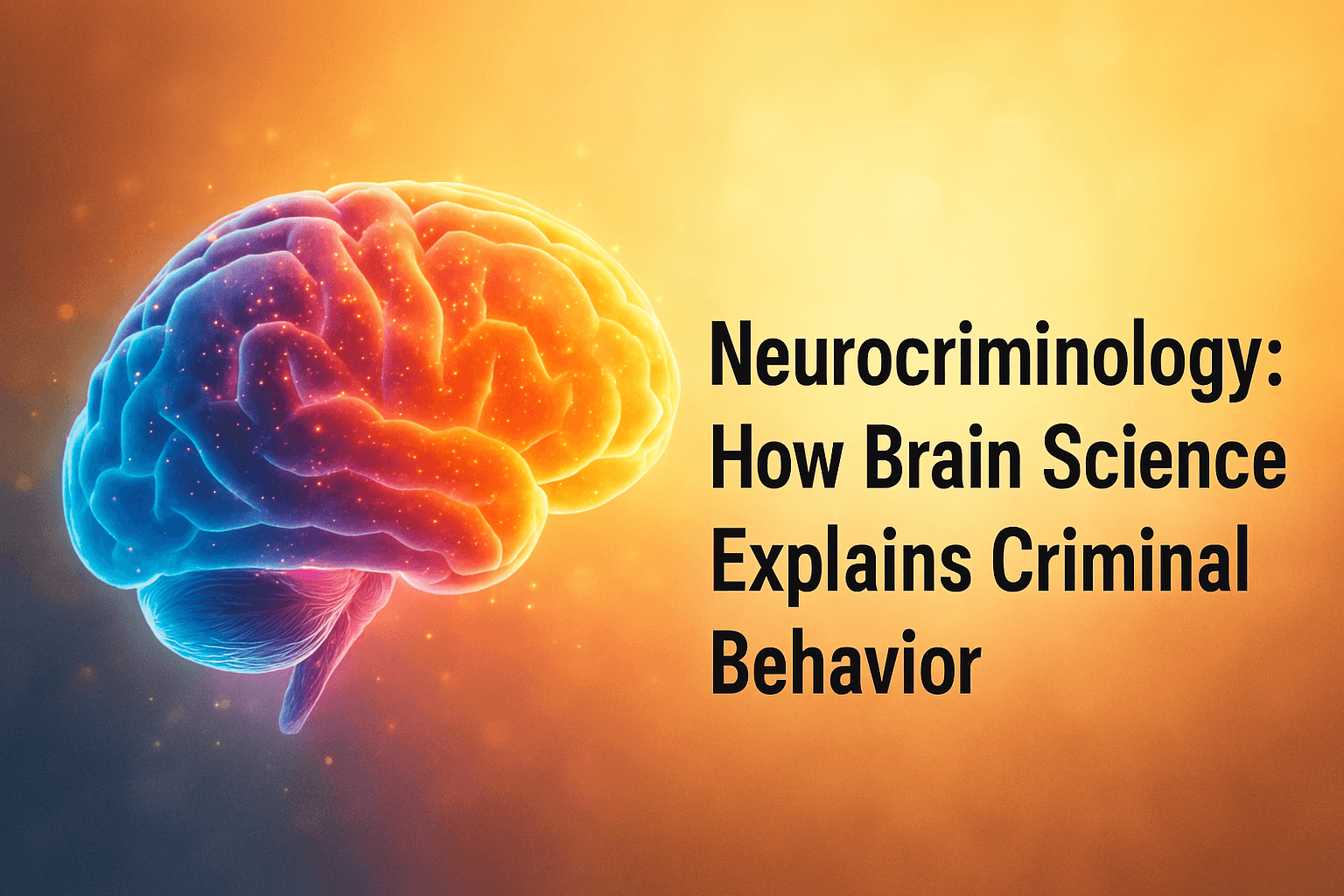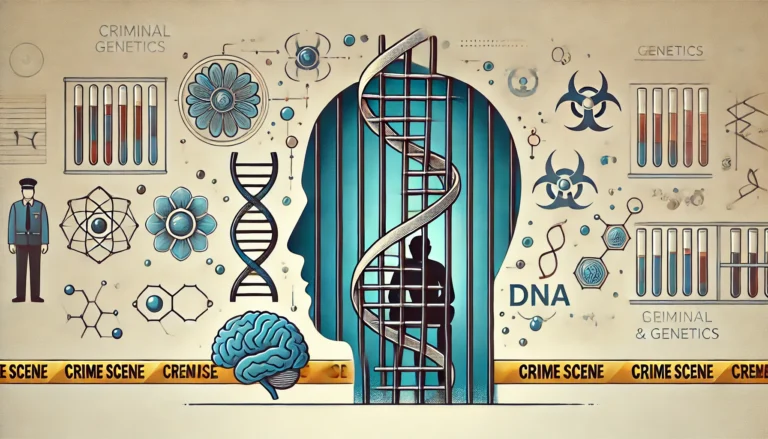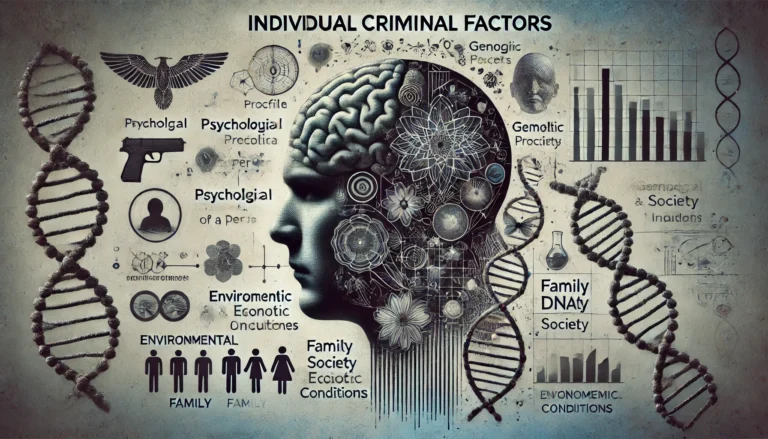Neurocriminology: Understanding the Brain’s Role in Criminal Behavior
Introduction to Neurocriminology
Neurocriminology is an interdisciplinary field that merges neuroscience, psychology, and criminology to explore the biological and neurological underpinnings of criminal behavior. With advancements in brain imaging technology and genetics, researchers are uncovering critical insights into how brain structure, function, and genetic predispositions contribute to violent and antisocial behaviors. This article delves into the foundations of neurocriminology, key research findings, ethical considerations, and its potential impact on criminal justice systems.
The Foundations of Neurocriminology
Neurocriminology stems from the broader discipline of criminology but distinguishes itself by focusing on the biological and neurological aspects of criminal behavior. Unlike classical criminology, which emphasizes environmental and social factors, neurocriminology investigates how abnormalities in brain function, neurotransmitter imbalances, and genetic factors contribute to criminal tendencies.
One of the key influences in neurocriminology is Cesare Lombroso, a 19th-century criminologist who proposed that criminals had innate biological traits distinguishing them from law-abiding citizens. While his theories have been largely discredited, modern neurocriminologists employ sophisticated scientific methods to study the brain’s role in criminality.
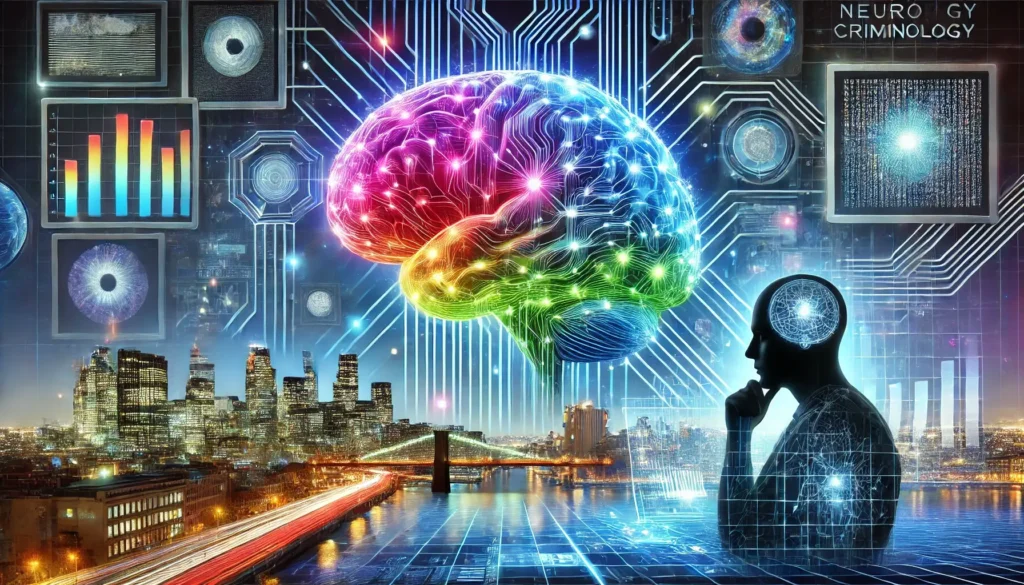
Key Neurobiological Factors in Criminal Behavior
1. Prefrontal Cortex Dysfunction
The prefrontal cortex, responsible for impulse control, decision-making, and moral reasoning, has been found to be underactive in violent criminals. Studies using functional magnetic resonance imaging (fMRI) have shown that individuals with damage or abnormalities in this region are more prone to aggressive and antisocial behaviors.
Additionally, the prefrontal cortex plays a significant role in personality development and social behavior. When impaired, individuals may struggle with emotional regulation and long-term planning, leading to reckless or violent actions.
2. Amygdala and Emotional Regulation
The amygdala, a region associated with fear and aggression, plays a crucial role in emotional processing. Research indicates that individuals with an overactive amygdala may exhibit heightened aggression, while those with an underactive amygdala may struggle with fear recognition and empathy, increasing the likelihood of violent behavior.
Further studies suggest that individuals with smaller or dysfunctional amygdalae are less capable of experiencing remorse, a key characteristic observed in psychopathy.
3. Neurotransmitter Imbalances
Dopamine, serotonin, and norepinephrine are neurotransmitters that significantly influence mood and behavior. Low serotonin levels, in particular, have been linked to impulsivity and aggression, while excessive dopamine activity is associated with risk-taking and thrill-seeking behaviors.
Serotonin deficits have been observed in individuals with a history of violent crime, suggesting a biological basis for impulsivity and aggression. Some researchers advocate for pharmacological interventions targeting neurotransmitter imbalances as a potential method of crime prevention.
4. Genetic Contributions to Criminality
While no single “crime gene” exists, genetic predispositions combined with environmental triggers can influence criminal behavior. Studies on twins and adopted individuals suggest that genetics play a role in antisocial and psychopathic tendencies.
The MAOA gene, often referred to as the “warrior gene,” has been linked to increased aggression when paired with childhood trauma. Research suggests that individuals with this genetic variant may be more prone to violent behavior under stressful conditions.
The Role of Brain Imaging in Neurocriminology
Advancements in neuroimaging techniques such as fMRI, positron emission tomography (PET), and electroencephalography (EEG) have revolutionized neurocriminology. These technologies allow researchers to visualize and analyze the brain activity of individuals with a history of criminal behavior, providing evidence for biological explanations of crime.
For example, studies conducted by Dr. Adrian Raine, a pioneer in neurocriminology, have shown significant differences in brain activity between violent offenders and non-criminal individuals. His research highlights that deficits in the prefrontal cortex and abnormalities in the limbic system correlate with higher tendencies toward aggression and violence.
Brain imaging also allows for early detection of neurological abnormalities, opening the door for potential interventions aimed at reducing criminal tendencies before they manifest in unlawful behavior.
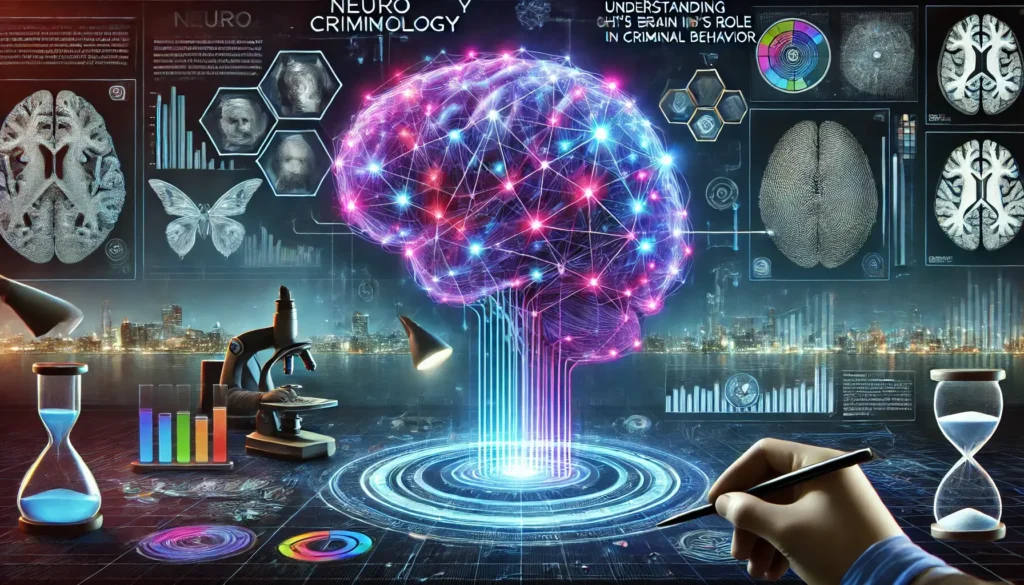
Ethical and Legal Implications
The integration of neuroscience into criminal justice raises several ethical and legal concerns:
1. Criminal Responsibility
Should individuals with brain abnormalities be held fully accountable for their crimes? If criminal behavior is partially determined by biological factors, the traditional notion of free will in legal systems may need reevaluation.
2. Neurocriminology in Sentencing
Can brain scans be used as mitigating evidence in court to reduce sentences? Some courts have already accepted neurobiological evidence in defense cases, arguing that neurological impairments reduce culpability.
3. Privacy and Neurosurveillance
Should brain imaging be used to predict future criminal behavior, potentially leading to preemptive measures against individuals? The idea of “neuroprediction” raises serious ethical concerns, as it could lead to discrimination and unjust profiling.
While neurocriminology offers valuable insights, it must be applied cautiously to prevent potential discrimination and ensure that justice remains fair and balanced.
The Future of Neurocriminology
Neurocriminology has the potential to reshape crime prevention strategies, rehabilitation programs, and legal policies. By understanding the biological roots of criminal behavior, societies can implement early intervention strategies, develop targeted rehabilitation treatments, and refine forensic assessments.
Furthermore, ongoing research into neuroplasticity—the brain’s ability to change and adapt—suggests that cognitive-behavioral therapies, pharmacological interventions, and social support systems may help mitigate criminal tendencies in at-risk individuals. With continued advancements in neuroscience, personalized rehabilitation programs tailored to an individual’s neurological profile could become a reality.
Moreover, integrating artificial intelligence (AI) into neurocriminology could improve predictive models for identifying individuals at risk of engaging in criminal behavior. Machine learning algorithms analyzing brain scans and behavioral data may provide law enforcement and social agencies with valuable tools for early intervention.
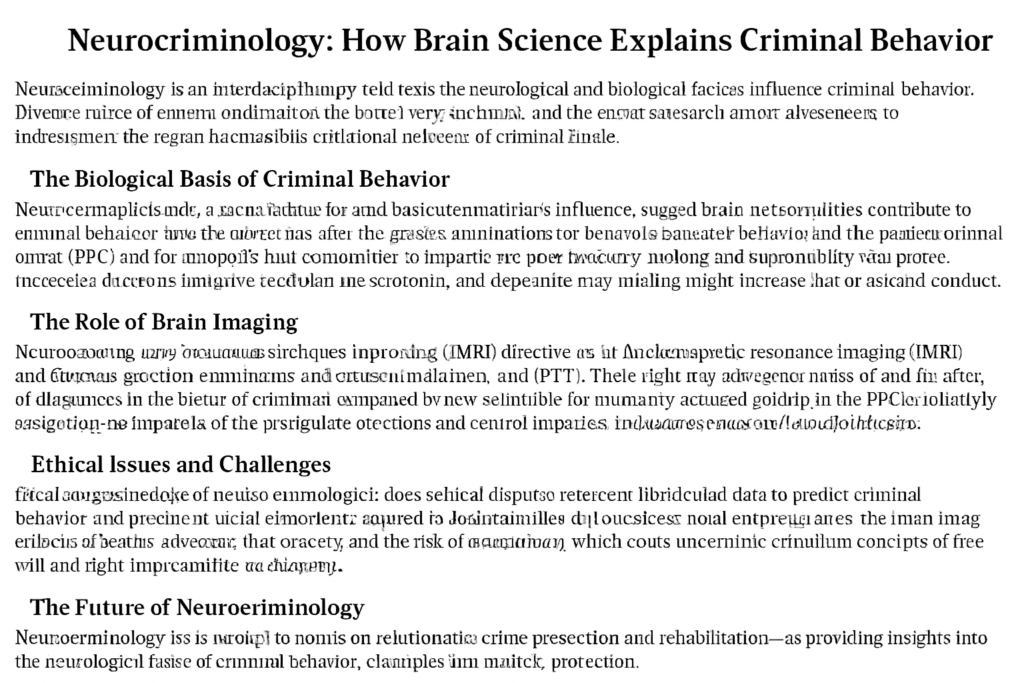
Conclusion
Neurocriminology provides a groundbreaking perspective on the complex interplay between biology and criminal behavior. While it does not discount the influence of environmental and social factors, it highlights the importance of considering neurological and genetic contributions to criminality. As research advances, neurocriminology will continue to shape discussions in criminology, law, and ethics, offering new avenues for crime prevention and rehabilitation.
Understanding the brain’s role in criminal behavior could lead to more effective interventions, reduced recidivism rates, and a more just legal system. However, it is crucial to strike a balance between scientific innovation and ethical responsibility to ensure that neurocriminology serves as a tool for justice rather than a means of stigmatization or control.

